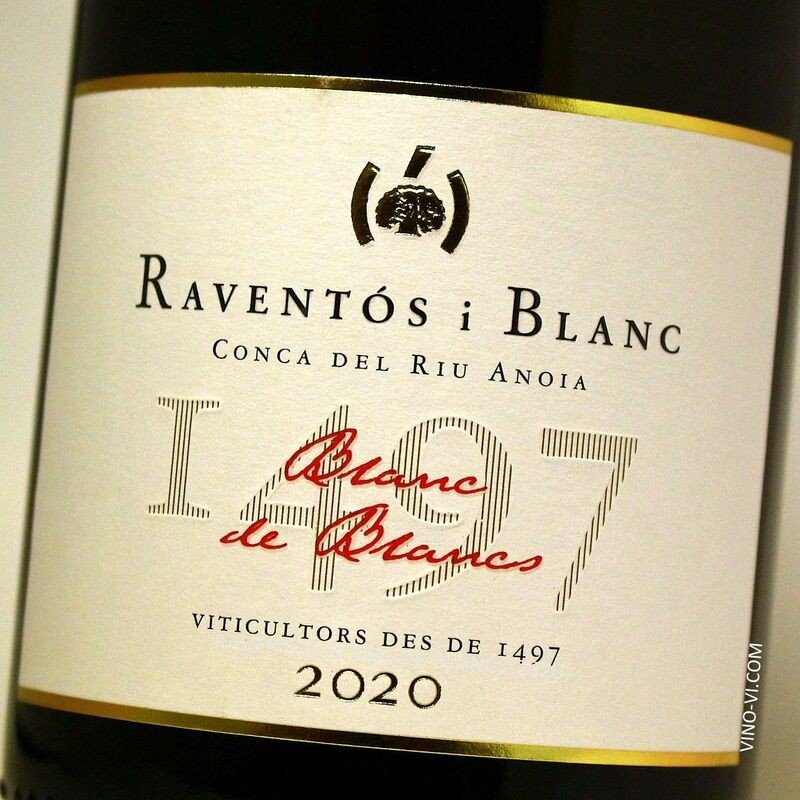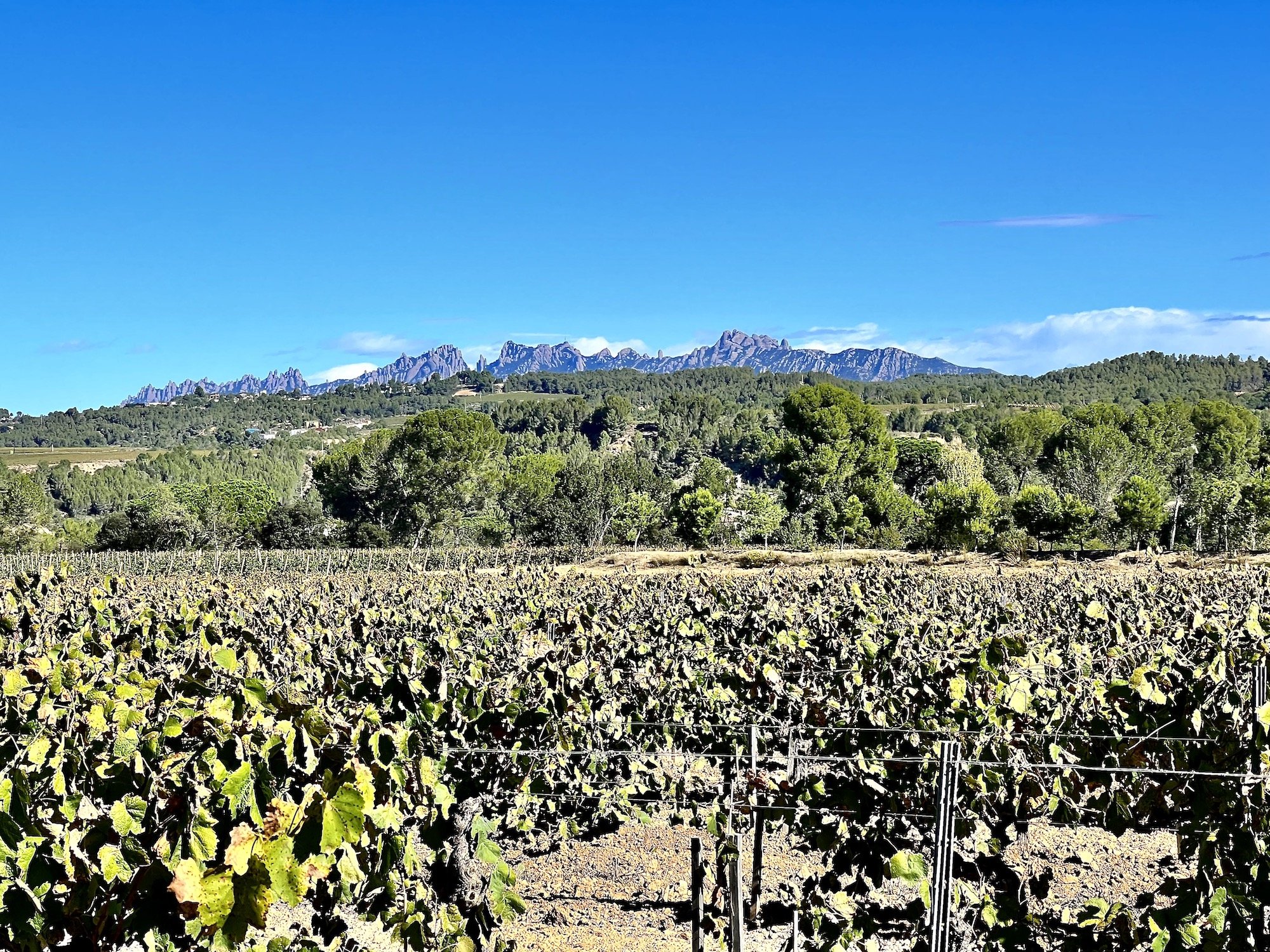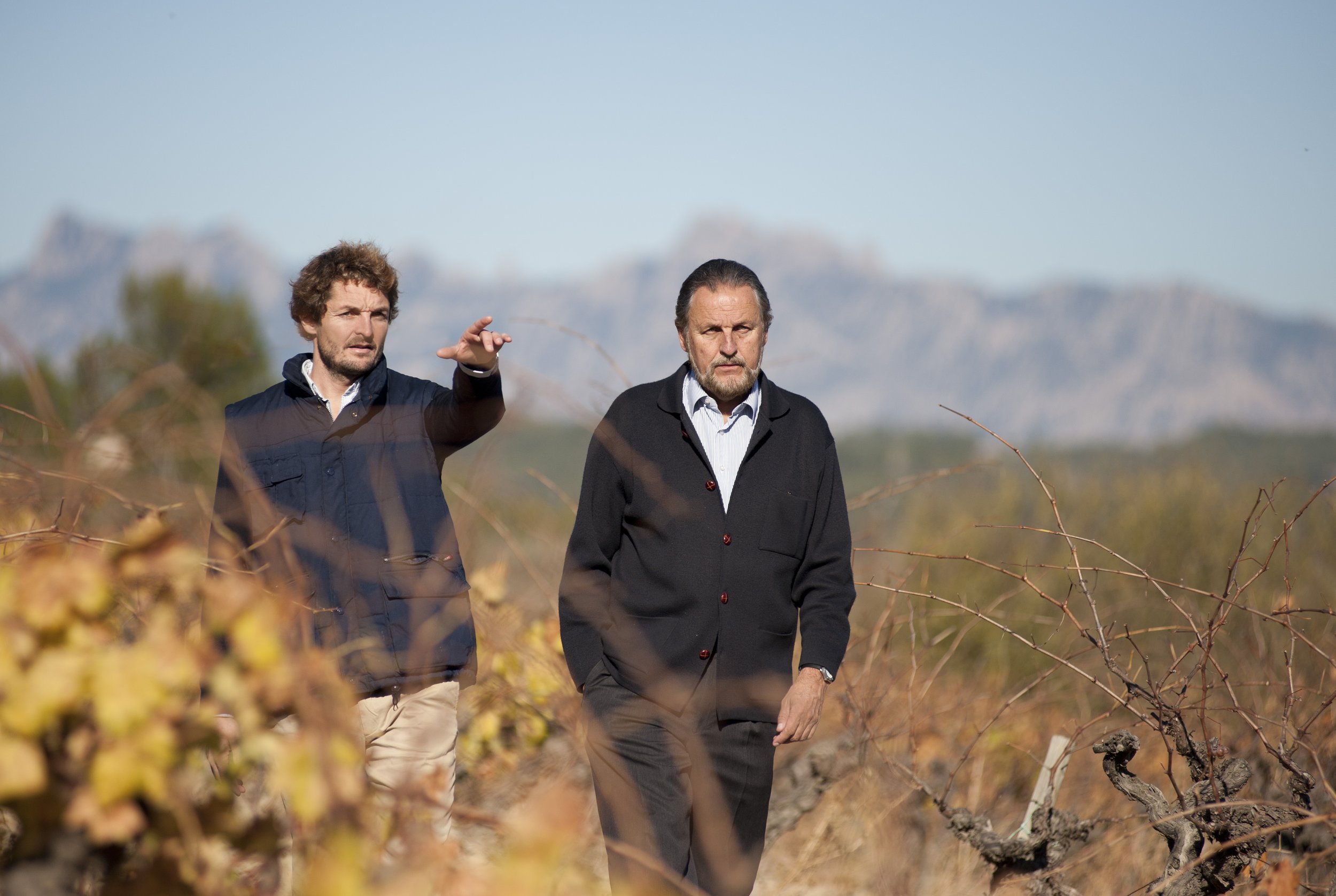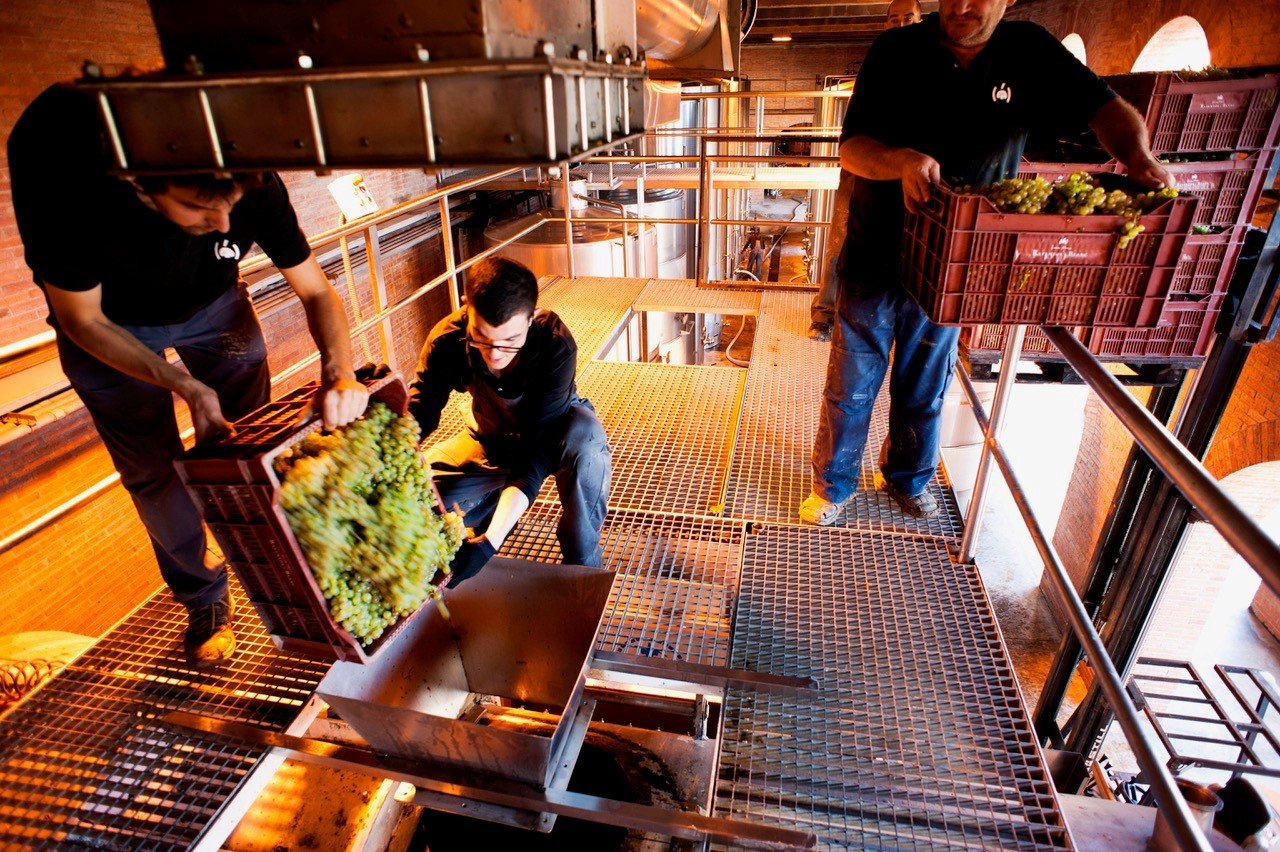Get to Know Sparkling Wine Producer Raventós i Blanc & Conca del Riu Anoia DO
Ravento i Blanc Blanc de Blancs Brut
With more than 500 years of winemaking experience, Raventós is the oldest producer in Spain, and one of the oldest wine producers in the world, known for their quality and willingness to continually innovate to improve their winemaking. Most of their history was spent making cava, but like a few other producers, they recently decided to abandon cava in hopes of establishing their own category, Conca del Riu Anoia DO.
History of Raventós
Raventós i Blanc vineyards overlooking Monserrat
The Raventós family first planted vines in 1497 in the Catalonian municipality of Sant Sadurni d’Anoia, located approximately 30 miles west of Barcelona in the Penedés region. One of the oldest viticultural areas in Europe, the Penedés considered one of the best wine regions in the country behind only Rioja. It may be best known as the center for cava production, accounting for more than 95% of all sparkling wine made in Spain.
The Raventós family grew grapes for their own use as well as for commercial sale. In 1681, then-owner Miquel Raventós married Maria Anna Cordoniú, the daughter of another prominent winemaker. This marriage brought the two families together to form Raventós Cordoniú.
This new company’s main product was Mistella, a wine made from a combination of fortified grape must and alcohol. In the late 19th century, the phylloxera epidemic destroyed most of the crops. Simultaneously, Spain’s civil war shut down nearly all methods of distribution, causing practically all their wine business to come to a halt.
Replanting for the Future
Manuel Raventós and Pepe Raventós
Realizing the unusual opportunity to completely change the way they had been operating, winemaker Josep Raventós i Fatjó made the decision to re-plant only native grapes. Furthermore, the new wine would be made in the sparkling style of France’s Champagne using the same methode traditionelle. In 1872, Josep made the world’s first bottle of cava, beginning Raventós Cordoniú’s history as a top-echelon producer of Spanish sparkling wine.
Shortly after, winemaker Manuel Raventós Domènech took the next step in developing cava into the wine we know today. In 1888 he formally established their wine’s coupage as a blend of the three local grapes grown on their property, xarel-lo, macabeo, and parellada, a blend still used for wines produced today.
In March of 1986, Josep Maria Raventós i Blanc and his son, Manuel Raventós i Negra, founded Raventós i Blanc. As the creator of the cava DO (Denominació d’Origen in Catalan) and the president of the cava regulatory council, Josep was hugely influential in the region’s cava production. Sadly, he died of a heart attack while traveling to New Zealand just a few days before the official opening of the winery, leaving Manuel to carry on.
Today, the family’s 21st generation continues the winemaking tradition. Pepé Raventós i Vidal officially joined the family business in 2001, although he grew up helping during the harvest. Pepé’s wine expertise and knowledge came from working the fields in Saint Émilion and learning wine production from top Loire Valley producer Didier Dagueneau.
Francesc Escala in the vineyard
Francesc Escala, a close childhood friend of Pepé, helps run the day-to-day operations at the winery. Leading me through the vineyards, he shares the ‘three messages’ he and Pepé feel people need to understand. “The first is family,” he says. “The strength of Raventós i Blanc comes from our family history.”
Raventos box with wine
Establishing the Conca del Riu Anoia DO
The second message is the authenticity of production. In 2012, Pepé made the decision for Raventós i Blanc to leave the cava DO. He felt there wasn’t enough attention paid or effort made to preserve the local terroir. “We need to protect that legacy,” Francesc asserts. “As Pepé says, we don’t want perfect wines, we want authentic wines. That starts with terroir.”
After leaving the cava DO, Raventós i Blanc was invited to join the nascent Corpinnat DO, a brand-new designation created to differentiate Sant Sadurni d’Anoia from the countrywide application of the cava DO. They refused, instead choosing to work towards creating their own identification, the Conca del Riu Anoia DO. “We didn’t agree with the rules for Corpinnat. We wanted to focus more on what we were doing to make the best wine we could.”
Conca del Riu Anoia DO must be 100% estate produced and bottled, with at least 50% estate grown grapes. In addition the grower must be sustainable with a path towards organic, use 100% native grape varieties, be aged a minimum of 18 months and must be grown in the Valley of the River Anoia.
The third message is biodiversity, a particular interest of Pepé and Francesc. “We asked how man, plant, and animal can best live together,” Francesc reflects. The answer was a comprehensive plan to use natural resources and techniques whenever possible.
For example, powdered cow horn is mixed into the soil to add nutrition. An apiary stands at the end of a row of vines. “The bees help keep the flora alive and thriving,” he comments softly as we walk by so as not to disturb the hive. They constructed nearly 50 birdhouses in an attempt to bring back the bird population that thrived in the area before many farms in the area started using chemical pesticides.
Horses used on the property
Horses are used for almost all of the plow labor needed. They own three Breton horses from France that do the majority of the work. Named François, Henri, and Kinder, these gigantic animals live in a stable at the top of the northern slope. “We use horses because they will feel a root as they walk, and stop. Plus, it dramatically reduces compaction and doesn’t create any carbon dioxide. It’s much better for the soil and the environment.”
Raventós i Blanc’s wine reflects this intense focus on terroir. The Blanc de Blancs is made by blending the classic three grapes with Malvasia de Sitges, a local varietal they carefully brought back from near extinction. The De La Finca uses grapes from the oldest vineyard sites, which are situated at the highest elevations. Care is taken to emphasize the saline notes that come naturally from the marine soils filled with fossils.
Raventos i Blanc team in the winery
In 2017, Francesc and Pepé created Can Sumoi winery, named for the 17th-century property purchased by Raventós i Blanc. The sprawling, 400-hectare estate radiates out from the three farmhouses and winery at the center. The higher-altitude property provides cooler growing conditions, perfect for the 30 hectares of xarel-lo, old Montonega, and Sumoll vines planted. The rest of the property is covered in oak and white pine trees.
Keeping true to their beliefs in natural winemaking, Can Sumoi is made without any additives, stablization, or filtration. They are certified organic as all. Tasting the fresh, saline notes of their 2020 xarel-lo, a best-seller and favorite of customers, the proof of their convictions is obvious. Sitting in Raventós i Blanc’s gorgeous tasting room, surrounded by family artifacts and paintings depicting their long and storied history, Francesc takes a sip of the wine and smiles. “If we listen closely to the three messages, the details take care of themselves.”







